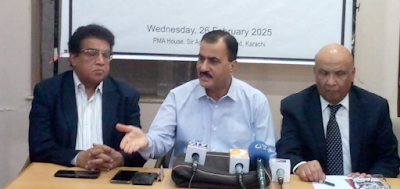Building collapse crisis looms in Karachi
A five-storey building in Karachi’s Lyari area collapsed in the first week of this month, killing 27 people — men and women of all ages — and injuring about a dozen others. It took rescue teams more than 50 hours to complete the operation, amid reports of poor coordination among the various agencies involved.
As public
outrage grew over the failure of building regulators and civic watchdogs, Sindh
chief minister announced that a detailed inquiry had been launched and those
responsible would be brought to justice. However, by the time of writing this
piece, there was no official update on the findings or actions taken, apart
from the suspension of two Building Control officials.
Lyari has
suffered similar tragedies before: in 2011 and 2020, two major collapses killed
55 people in total, with sporadic incidents reported in other years.
Authorities have, from time to time, declared some 480 buildings in Karachi’s
old city areas as dangerous or unfit for living, issuing repeated evacuation
notices. Yet, there is no systematic record — let alone enforcement — against
the countless illegal or substandard structures scattered across the metropolis
housing more than 20 million people.
The
perception is widespread: Karachi is dotted with death traps — both crumbling
century-old buildings and shoddy high-rises thrown up over the past four
decades. Their continued existence is a stark reflection of official apathy and
the tacit complicity of those who should be safeguarding public safety. The
latest Lyari disaster, like many others before it, demands a serious, transparent,
and lasting follow-up.
Illegal constructions — in both residential and industrial areas — have plagued Karachi and other cities of Sindh for decades. Yet, the issue remains largely unaddressed, while citizens continue to bear the devastating human and developmental costs of inaction.
If the
government truly recognises the gravity of this crisis, it must do more than
conducting inquiries after each tragedy. A comprehensive, consensus-based
action plan is needed — not just for regulating new constructions but also for
securing or replacing dangerous buildings already housing thousands of people.
Each year,
as part of its pre-monsoon routine, the Sindh Building Control Authority (SBCA)
releases a list of “dangerous” buildings across the province, warning owners
and residents to vacate and demolish them. In Karachi, these are concentrated
in areas such as Saddar, Keamari, Malir, and Liaquatabad. But the SBCA notices
are rarely taken seriously — not by the authorities tasked with enforcement,
nor by the people expected to comply. Demolition rates remain dismally low,
making it clear that rules and decisions need urgent review. Nothing is more
valuable than human life.
For any
real success, socio-economic realities must be factored in. Many residents refuse
to leave unsafe buildings simply because they have nowhere else to go. There is
no legal mechanism for providing alternative housing, nor is there support for
owners unable to afford relocation or reconstruction. The government must
address these gaps — whether through incentives, partnerships, or voluntary
reconstruction schemes that resettle original occupants with improved
facilities.
Yes, there
are limitations. But the misery, desperation, and legitimate concerns of both
residents and owners cannot be brushed aside. Ignoring them means condemning
Karachi to repeat this cycle of collapse, loss, and neglect.
Social Track/editorial
(July 25, 2025)
File photos courtesy: ST





Comments
Post a Comment